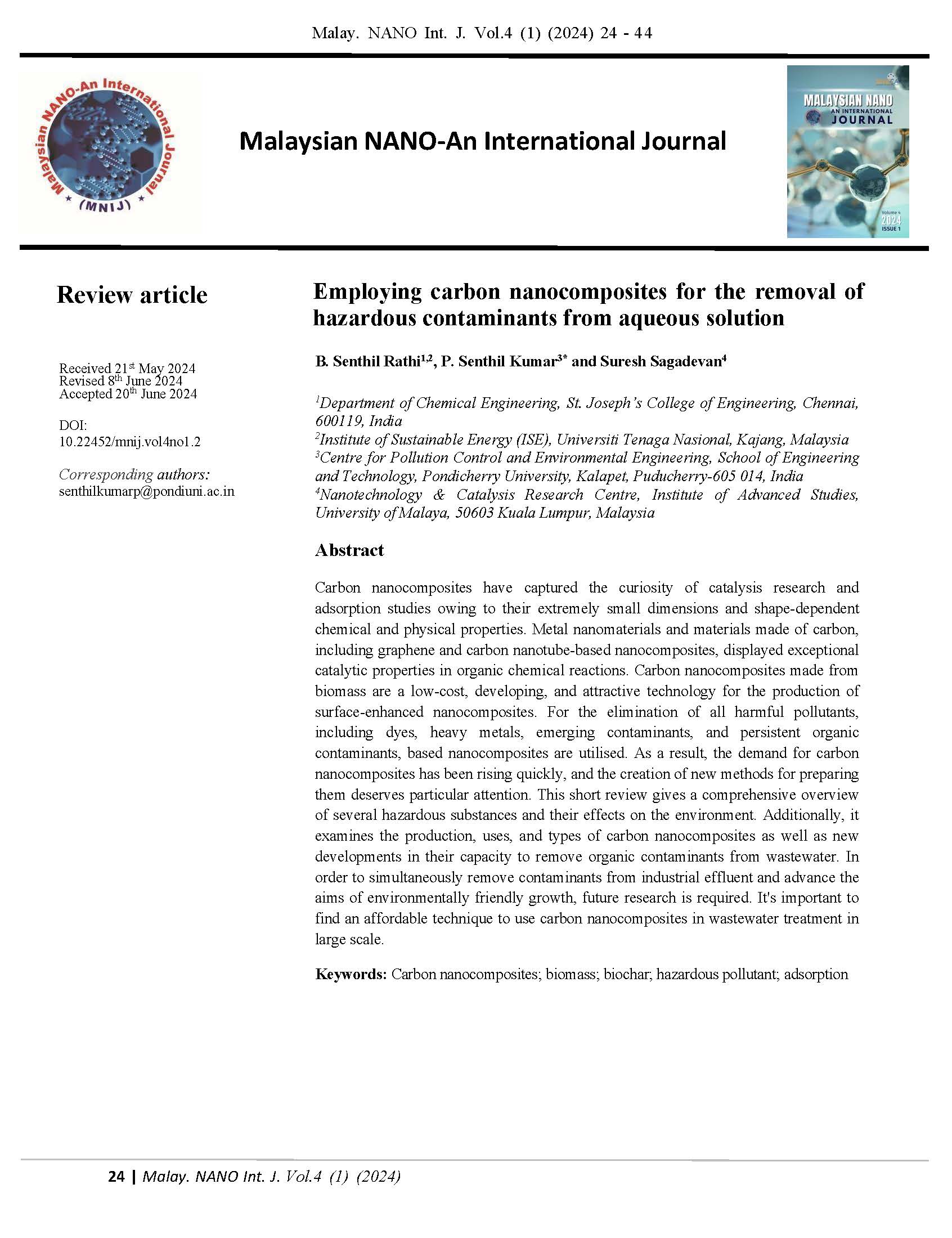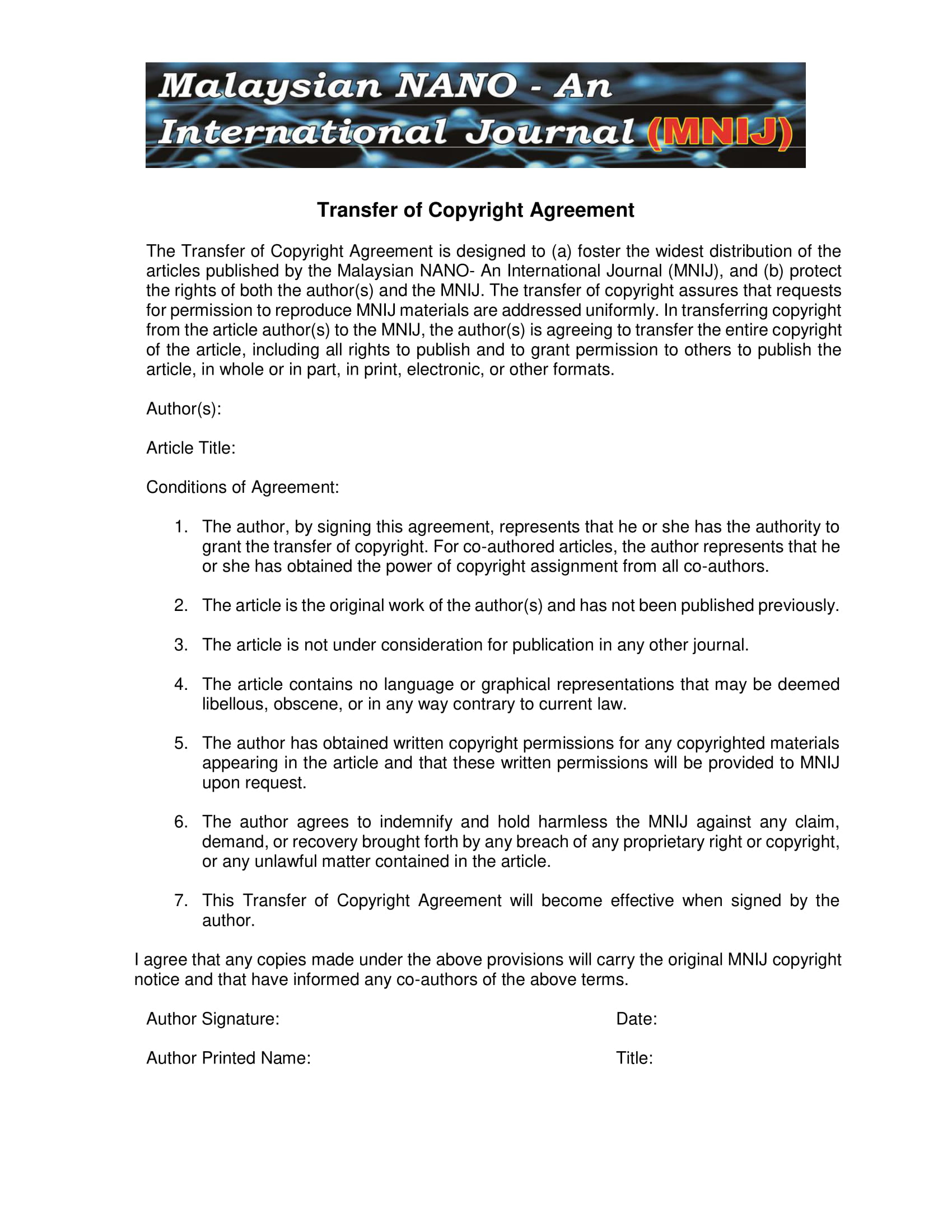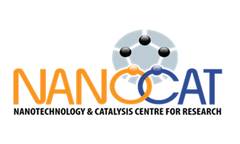Employing carbon nanocomposites for the removal of hazardous contaminants from aqueous solution
DOI:
https://doi.org/10.22452/mnij.vol4no1.2Keywords:
Carbon nanocomposites, biomass, biochar, hazardous pollutant, adsorptionAbstract
Carbon nanocomposites have captured the curiosity of catalysis research and adsorption studies owing to their extremely small dimensions and shape-dependent chemical and physical properties. Metal nanomaterials and materials made of carbon, including graphene and carbon nanotube-based nanocomposites, displayed exceptional catalytic properties in organic chemical reactions. Carbon nanocomposites made from biomass are a low-cost, developing, and attractive technology for the production of surface-enhanced nanocomposites. For the elimination of all harmful pollutants, including dyes, heavy metals, emerging contaminants, and persistent organic contaminants, -based nanocomposites are utilised. As a result, the demand for carbon nanocomposites has been rising quickly, and the creation of new methods for preparing them deserves particular attention. This short review gives a comprehensive overview of several hazardous substances and their effects on the environment. Additionally, it examines the production, uses, and types of carbon nanocomposites as well as new developments in their capacity to remove organic contaminants from wastewater. In order to simultaneously remove contaminants from industrial effluent and advance the aims of environmentally friendly growth, future research is required. It's important to find an affordable technique to use carbon nanocomposites in wastewater treatment in large scale.
Downloads
References
Ahamad, T., Naushad, M., Alhabarah, A.N. and Alshehri, S.M., 2019. N/S doped highly porous magnetic carbon aerogel derived from sugarcane bagasse cellulose for the removal of bisphenol‑A. International journal of biological macromolecules, 132, pp.1031-1038.
Al-Musawi, T.J., Mengelizadeh, N., Taghavi, M., Shehu, Z. and Balarak, D., 2022. Capability of copper–nickel ferrite nanoparticles loaded onto multi-walled carbon nanotubes to degrade acid blue 113 dye in the sonophotocatalytic treatment process. Environmental Science and Pollution Research, 29(34), pp.51703-51716.
Al-Mutairi, N.H., Mehdi, A.H. and Kadhim, B.J., 2022. Nanocomposites Materials Definitions, Types and Some of Their Applications: A Review. European Journal of Research Development and Sustainability, 3(2), pp.102-108.
Alwan, H.H., 2022. Oxidative desulfurization of a model fuel using MoO3 nanoparticles supported on carbon nanotubes catalyst: Examine most significance variables, optimization, kinetics and thermodynamics study. South African Journal of Chemical Engineering, 40(1), pp.230-239.
Ambika and Singh, P.P., 2021. Carbon-Based Nanocomposites: Preparation and Application in Environmental Pollutants Removal. Environmental remediation through carbon based nano composites, pp.203-229.
Anzar, N., Hasan, R., Tyagi, M., Yadav, N. and Narang, J., 2020. Carbon nanotube-A review on Synthesis, Properties and plethora of applications in the field of biomedical science. Sensors International, 1, p.100003.
Ardani, M.R., Pang, A.L., Pal, U., Zheng, R., Arsad, A., Hamzah, A.A. and Ahmadipour, M., 2022. Ultrasonic-assisted polyaniline-multiwall carbon nanotube photocatalyst for efficient photodegradation of organic pollutants. Journal of Water Process Engineering, 46, p.102557.
Arun, J., Nirmala, N., Priyadharsini, P., Dawn, S.S., Santhosh, A., Gopinath, K.P. and Govarthanan, M., 2022. A mini-review on bioderived carbon and its nanocomposites for removal of organic pollutants from wastewater. Materials Letters, 310, p.131476.
Ates, M., Eker, A.A. and Eker, B., 2017. Carbon nanotube-based nanocomposites and their applications. Journal of adhesion science and Technology, 31(18), pp.1977-1997.
Barasarathi, J., Abdullah, P.S. and Uche, E.C., 2022. Application of magnetic carbon nanocomposite from agro-waste for the removal of pollutants from water and wastewater. Chemosphere, 305, p.135384.
Behrens, S. and Appel, I., 2016. Magnetic nanocomposites. Current opinion in biotechnology, 39, pp.89-96.
Chen, M.M., Niu, H.Y., Niu, C.G., Guo, H., Liang, S. and Yang, Y.Y., 2022. Metal-organic framework-derived CuCo/carbon as an efficient magnetic heterogeneous catalyst for persulfate activation and ciprofloxacin degradation. Journal of Hazardous Materials, 424, p.127196.
Dong, M., Guo, J., Wang, Y., Gai, X., Xiong, X., Zeng, J., Wang, Y. and Wu, Y., 2022. Humic acid non-covalent functionalized Multi-walled carbon nanotubes composite membrane and its application for the removal of organic dyes. Journal of Environmental Chemical Engineering, 10(2), p.107320.
Dong, Y.D., Zhang, L.Q., Zhou, P., Liu, Y., Lin, H., Zhong, G.J., Yao, G., Li, Z.M. and Lai, B., 2022a. Natural cellulose supported carbon nanotubes and Fe3O4 NPs as the efficient peroxydisulfate activator for the removal of bisphenol A: An enhanced non-radical oxidation process. Journal of Hazardous Materials, 423, p.127054.
Duan, P., Xu, X., Guo, K., Yue, Q. and Gao, B., 2022. Peroxymonosulfate activation on a chainmail catalyst via an electron shuttle mechanism for efficient organic pollutant removal. Applied Catalysis B: Environmental, 316, p.121695.
Elamin, M.R., Abdulkhair, B.Y. and Elzupir, A.O., 2023. Removal of ciprofloxacin and indigo carmine from water by carbon nanotubes fabricated from a low-cost precursor: Solution parameters and recyclability. Ain Shams Engineering Journal, 14(1), p.101844.
Elemike, E.E., Adeyemi, J., Onwudiwe, D.C., Wei, L. and Oyedeji, A.O., 2022. The future of energy materials: A case of MXenes-carbon dots nanocomposites. Journal of Energy Storage, 50, p.104711.
Feng, Z., Adolfsson, K.H., Xu, Y., Fang, H., Hakkarainen, M. and Wu, M., 2021. Carbon dot/polymer nanocomposites: From green synthesis to energy, environmental and biomedical applications. Sustainable Materials and Technologies, 29, p.e00304.
Firouzjaei, M.D., Afkhami, F.A., Esfahani, M.R., Turner, C.H. and Nejati, S., 2020. Experimental and molecular dynamics study on dye removal from water by a graphene oxide-copper-metal organic framework nanocomposite. Journal of Water Process Engineering, 34, p.101180.
Foroutan, R., Peighambardoust, S.J., Hemmati, S., Khatooni, H. and Ramavandi, B., 2021a. Preparation of clinoptilolite/starch/CoFe2O4 magnetic nanocomposite powder and its elimination properties for cationic dyes from water and wastewater. International Journal of Biological Macromolecules, 189, pp.432-442.
Foroutan, R., Peighambardoust, S.J., Latifi, P., Ahmadi, A., Alizadeh, M. and Ramavandi, B., 2021. Carbon nanotubes/β-cyclodextrin/MnFe2O4 as a magnetic nanocomposite powder for tetracycline antibiotic decontamination from different aqueous environments. Journal of Environmental Chemical Engineering, 9(6), p.106344.
Garg, A., Chalak, H.D., Belarbi, M.O., Zenkour, A.M. and Sahoo, R., 2021. Estimation of carbon nanotubes and their applications as reinforcing composite materials–an engineering review. Composite Structures, 272, p.114234.
Ghanavati, B., Bozorgian, A. and Ghanavati, J., 2022. Removal of Copper (II) Ions from the Effluent by Carbon Nanotubes Modified with Tetrahydrofuran. Chemical Review and Letters, 5(1), pp.68-75.
Giliopoulos, D., Zamboulis, A., Giannakoudakis, D., Bikiaris, D. and Triantafyllidis, K., 2020. Polymer/metal organic framework (MOF) nanocomposites for biomedical applications. Molecules, 25(1), p.185.
Guo, F., Wang, K., Lu, J., Chen, J., Dong, X., Xia, D., Zhang, A. and Wang, Q., 2019. Activation of peroxymonosulfate by magnetic carbon supported Prussian blue nanocomposite for the degradation of organic contaminants with singlet oxygen and superoxide radicals. Chemosphere, 218, pp.1071-1081.
Guo, R., Cai, X., Liu, H., Yang, Z., Meng, Y., Chen, F., Li, Y. and Wang, B., 2019a. In situ growth of metal–organic frameworks in three-dimensional aligned lumen arrays of wood for rapid and highly efficient organic pollutant removal. Environmental science & technology, 53(5), pp.2705-2712.
Hashem, T., Ibrahim, A.H., Wöll, C. and Alkordi, M.H., 2019. Grafting zirconium-based metal–organic framework UiO-66-NH2 nanoparticles on cellulose fibers for the removal of Cr (VI) ions and methyl orange from water. ACS Applied Nano Materials, 2(9), pp.5804-5808.
Hojjati-Najafabadi, A., Mansoorianfar, M., Liang, T., Shahin, K. and Karimi-Maleh, H., 2022. A review on magnetic sensors for monitoring of hazardous pollutants in water resources. Science of The Total Environment, 824, p.153844.
Ismael, A.M., El-Shazly, A.N., Gaber, S.E., Rashad, M.M., Kamel, A.H. and Hassan, S.S.M., 2020. Novel TiO 2/GO/CuFe 2 O 4 nanocomposite: a magnetic, reusable and visible-light-driven photocatalyst for efficient photocatalytic removal of chlorinated pesticides from wastewater. RSC advances, 10(57), pp.34806-34814.
Ismail, H., Salleh, S.Z. and Ahmad, Z., 2013. The effect of partial replacement of carbon black (CB) with halloysite nanotubes (HNTs) on the properties of CB/HNT-filled natural rubber nanocomposites. Journal of Elastomers & Plastics, 45(5), pp.445-455.
Kausar, A., 2021. Conjugated polymer/graphene oxide nanocomposites—State-of-the-art. Journal of Composites Science, 5(11), p.292.
Khodabakhshi, S., Fulvio, P.F. and Andreoli, E., 2020. Carbon black reborn: Structure and chemistry for renewable energy harnessing. Carbon, 162, pp.604-649.
Krolow, M.Z., Hartwig, C.A., Link, G.C., Raubach, C.W., Pereira, J.S.F., Picoloto, R.S., Gonçalves, M.R.F., Carreño, N.L.V. and Mesko, M.F., 2013. Synthesis and characterisation of carbon nanocomposites. In NanoCarbon 2011: Selected works from the Brazilian Carbon Meeting (pp. 33-47). Springer Berlin Heidelberg.
Lellis, B., Fávaro-Polonio, C.Z., Pamphile, J.A. and Polonio, J.C., 2019. Effects of textile dyes on health and the environment and bioremediation potential of living organisms. Biotechnology Research and Innovation, 3(2), pp.275-290.
Li, J., Zhu, W., Gao, Y., Lin, P., Liu, J., Zhang, J. and Huang, T., 2022. The catalyst derived from the sulfurized Co-doped metal–organic framework (MOF) for peroxymonosulfate (PMS) activation and its application to pollutant removal. Separation and Purification Technology, 285, p.120362.
Li, K., Li, J.J., Zhao, N., Ma, Y. and Di, B., 2020. Removal of tetracycline in sewage and dairy products with high-stable MOF. Molecules, 25(6), p.1312.
Lingamdinne, L.P., Koduru, J.R. and Karri, R.R., 2019. A comprehensive review of applications of magnetic graphene oxide based nanocomposites for sustainable water purification. Journal of environmental management, 231, pp.622-634.
Liu, J., Qiao, S.Z., Hu, Q.H. and Lu, G.Q., 2011. Magnetic nanocomposites with mesoporous structures: synthesis and applications. small, 7(4), pp.425-443.
Liu, K., Zhao, D., Hu, Z., Xiao, Y., He, C., Jiang, F., Zhao, N., Zhao, C., Zhang, W. and Qiu, R., 2023. The adsorption and reduction of anionic Cr (VI) in groundwater by novel iron carbide loaded on N-doped carbon nanotubes: Effects of Fe-confinement. Chemical Engineering Journal, 452, p.139357.
Liu, Y., Lin, Q., Guo, Y., Zhao, J., Luo, X., Zhang, H., Li, G. and Liang, H., 2022. The nitrogen-doped multi-walled carbon nanotubes modified membrane activated peroxymonosulfate for enhanced degradation of organics and membrane fouling mitigation in natural waters treatment. Water Research, 209, p.117960.
Liu, Y., Liu, Z., Huang, D., Cheng, M., Zeng, G., Lai, C., Zhang, C., Zhou, C., Wang, W., Jiang, D. and Wang, H., 2019. Metal or metal-containing nanoparticle@ MOF nanocomposites as a promising type of photocatalyst. Coordination Chemistry Reviews, 388, pp.63-78.
Ma, H., Zhang, X., Feng, G., Ren, B., Pan, Z., Shi, Y., Xu, R., Wang, P., Liu, Y., Wang, G. and Fan, X., 2023. Carbon nanotube membrane armed with confined iron for peroxymonosulfate activation towards efficient tetracycline removal. Separation and Purification Technology, 312, p.123319.
Mahmoodi, N.M., Oveisi, M., Taghizadeh, A. and Taghizadeh, M., 2019. Novel magnetic amine functionalized carbon nanotube/metal-organic framework nanocomposites: From green ultrasound-assisted synthesis to detailed selective pollutant removal modelling from binary systems. Journal of hazardous materials, 368, pp.746-759.
Mahmoodi, N.M., Taghizadeh, M. and Taghizadeh, A., 2019a. Activated carbon/metal-organic framework composite as a bio-based novel green adsorbent: Preparation and mathematical pollutant removal modeling. Journal of Molecular Liquids, 277, pp.310-322.
Mahmoodi, N.M., Taghizadeh, M., Taghizadeh, A., Abdi, J., Hayati, B. and Shekarchi, A.A., 2019b. Bio-based magnetic metal-organic framework nanocomposite: Ultrasound-assisted synthesis and pollutant (heavy metal and dye) removal from aqueous media. Applied Surface Science, 480, pp.288-299.
Manoj, D., Rajendran, S., Hoang, T.K. and Soto-Moscoso, M., 2022. The role of MOF based nanocomposites in the detection of phenolic compounds for environmental remediation-A review. Chemosphere, 300, p.134516.
Martins, C.H.Z., Côa, F., Da Silva, G.H., Bettini, J., De Farias, M.A., Portugal, R.V., de Aragão Umbuzeiro, G., Alves, O.L. and Martinez, D.S.T., 2022. Functionalization of carbon nanotubes with bovine plasma biowaste by forming a protein corona enhances copper removal from water and ecotoxicity mitigation. Environmental Science: Nano, 9(8), pp.2887-2905.
Mehmood, A., Khan, F.S.A., Mubarak, N.M., Tan, Y.H., Karri, R.R., Khalid, M., Walvekar, R., Abdullah, E.C., Nizamuddin, S. and Mazari, S.A., 2021. Magnetic nanocomposites for sustainable water purification—a comprehensive review. Environmental Science and Pollution Research, 28, pp.19563-19588.
Mohanta, D., Patnaik, S., Sood, S. and Das, N., 2019. Carbon nanotubes: Evaluation of toxicity at biointerfaces. Journal of pharmaceutical analysis, 9(5), pp.293-300.
Norizan, M.N., Moklis, M.H., Demon, S.Z.N., Halim, N.A., Samsuri, A., Mohamad, I.S., Knight, V.F. and Abdullah, N., 2020. Carbon nanotubes: Functionalisation and their application in chemical sensors. RSC advances, 10(71), pp.43704-43732.
Palanisamy, G., Venkatesh, G., Srinivasan, M., Bhuvaneswari, K., Elavarasan, N., Vignesh, S., Pazhanivel, T., Shkir, M., Hakami, J. and Lee, J., 2022. α-Bi2O3 nanoparticle and multiwall carbon nanotube hybrid with protonated g-C3N4 nanosheets for superior photocatalytic performance towards the mixed organic contaminants. Journal of Alloys and Compounds, 922, p.166147.
Pathak, R., Punetha, V.D., Bhatt, S. and Punetha, M., 2023. Multifunctional role of carbon dot-based polymer nanocomposites in biomedical applications: a review. Journal of Materials Science, 58(15), pp.6419-6443.
Peng, J., Zhou, P., Zhou, H., Huang, B., Sun, M., He, C.S., Zhang, H., Ao, Z., Liu, W. and Lai, B., 2023. Removal of Phenols by Highly Active Periodate on Carbon Nanotubes: A Mechanistic Investigation. Environmental Science & Technology.
Rani, P., Kasneryk, V. and Opanasenko, M., 2022. MOF-inorganic nanocomposites: Bridging a gap with inorganic materials. Applied Materials Today, 26, p.101283.
Rathi, B.S., Kumar, P.S. and Vo, D.V.N., 2021. Critical review on hazardous pollutants in water environment: Occurrence, monitoring, fate, removal technologies and risk assessment. Science of The Total Environment, 797, p.149134.
Ribeiro, R.S., Vieira, O., Fernandes, R., Roman, F.F., de Tuesta, J.L.D., Silva, A.M. and Gomes, H.T., 2022. Synthesis of low-density polyethylene derived carbon nanotubes for activation of persulfate and degradation of water organic micropollutants in continuous mode. Journal of Environmental Management, 308, p.114622.
Rivas-Sanchez, A., Cruz-Cruz, A., Gallareta-Olivares, G., González-González, R.B., Parra-Saldívar, R. and Iqbal, H.M., 2022. Carbon-based nanocomposite materials with multifunctional attributes for environmental remediation of emerging pollutants. Chemosphere, 303, p.135054.
Robertson, C.G. and Hardman, N.J., 2021. Nature of carbon black reinforcement of rubber: Perspective on the original polymer nanocomposite. Polymers, 13(4), p.538.
Sarojini, G., Babu, S.V., Rajamohan, N., Rajasimman, M. and Pugazhendhi, A., 2022. Application of a polymer-magnetic-algae based nano-composite for the removal of methylene blue–characterization, parametric and kinetic studies. Environmental pollution, 292, p.118376.
Sherlala, A.I.A., Raman, A.A.A., Bello, M.M. and Asghar, A., 2018. A review of the applications of organo-functionalized magnetic graphene oxide nanocomposites for heavy metal adsorption. Chemosphere, 193, pp.1004-1017.
Siddiqui, M.T.H., Nizamuddin, S., Baloch, H.A., Mubarak, N.M., Dumbre, D.K., Inamuddin, Asiri, A.M., Bhutto, A.W., Srinivasan, M. and Griffin, G.J., 2018. Synthesis of magnetic carbon nanocomposites by hydrothermal carbonization and pyrolysis. Environmental Chemistry Letters, 16, pp.821-844.
Tee, G.T., Gok, X.Y. and Yong, W.F., 2022. Adsorption of pollutants in wastewater via biosorbents, nanoparticles and magnetic biosorbents: A review. Environmental Research, 212, p.113248.
Thangamani, G.J., Deshmukh, K., Kovářík, T., Nambiraj, N.A., Ponnamma, D., Sadasivuni, K.K., Khalil, H.A. and Pasha, S.K., 2021. Graphene oxide nanocomposites based room temperature gas sensors: A review. Chemosphere, 280, p.130641.
Veeman, D., Shree, M.V., Sureshkumar, P., Jagadeesha, T., Natrayan, L., Ravichandran, M. and Paramasivam, P., 2021. Sustainable development of carbon nanocomposites: synthesis and classification for environmental remediation. Journal of Nanomaterials, 2021, pp.1-21.
Wei, Z., Ma, X., Zhang, Y., Guo, Y., Wang, W. and Jiang, Z.Y., 2022. High-efficiency adsorption of phenanthrene by Fe3O4-SiO2-dimethoxydiphenylsilane nanocomposite: Experimental and theoretical study. Journal of Hazardous Materials, 422, p.126948.
Wu, J., Zhou, J., Zhang, S., Alsaedi, A., Hayat, T., Li, J. and Song, Y., 2019. Efficient removal of metal contaminants by EDTA modified MOF from aqueous solutions. Journal of colloid and interface science, 555, pp.403-412.
Xia, C., Huang, H., Liang, D., Xie, Y., Kong, F., Yang, Q., Fu, J., Dou, Z., Zhang, Q. and Meng, Z., 2022. Adsorption of tetracycline hydrochloride on layered double hydroxide loaded carbon nanotubes and site energy distribution analysis. Chemical Engineering Journal, 443, p.136398.
Xiong, R., Grant, A.M., Ma, R., Zhang, S. and Tsukruk, V.V., 2018. Naturally-derived biopolymer nanocomposites: Interfacial design, properties and emerging applications. Materials Science and Engineering: R: Reports, 125, pp.1-41.
Zaynab, M., Al-Yahyai, R., Ameen, A., Sharif, Y., Ali, L., Fatima, M., Khan, K.A. and Li, S., 2022. Health and environmental effects of heavy metals. Journal of King Saud University-Science, 34(1), p.101653.
Zhang, M., Ruan, J., Wang, L., Zhao, Z., Shao, W., Li, J., Chen, Z., Gu, C. and Qiao, W., 2022. MXene-like carbon sheet/carbon nanotubes derived from metal-organic frameworks for efficient removal of tetracycline by non-radical dominated advanced oxidation processes. Separation and Purification Technology, 300, p.121851.
Zhang, M., Xiao, C., Yan, X., Chen, S., Wang, C., Luo, R., Qi, J., Sun, X., Wang, L. and Li, J., 2020. Efficient removal of organic pollutants by metal–organic framework derived Co/C yolk–shell nanoreactors: size-exclusion and confinement effect. Environmental Science & Technology, 54(16), pp.10289-10300.
Zhao, R., Tian, Y., Li, S., Ma, T., Lei, H. and Zhu, G., 2019. An electrospun fiber based metal–organic framework composite membrane for fast, continuous, and simultaneous removal of insoluble and soluble contaminants from water. Journal of Materials Chemistry A, 7(39), pp.22559-22570.
Zheng, J., Lin, Q., Liu, Y., Fan, X., Xu, K., Ma, Y., He, J. and Fu, H., 2023. Peroxymonosulfate activation by Mg-introduced Fe-N carbon nanotubes to accelerate sulfamethoxazole degradation: Singlet oxygen-dominated nonradical pathway. Chemical Engineering Journal, 452, p.139233.
Zong, P., Wang, S., Liang, G., Shao, M., Yan, N., Xu, X., Xu, M., Li, W., Yang, Y., Chen, J. and Qiu, Z., 2022. Eco-friendly approach for effective removal for Congo red dye from wastewater using reusable Zn-Al layered double hydroxide anchored on multiwalled carbon nanotubes supported sodium dodecyl sulfonate composites. Journal of Molecular Liquids, 349, p.118468.

Downloads
Published
How to Cite
Issue
Section
License





